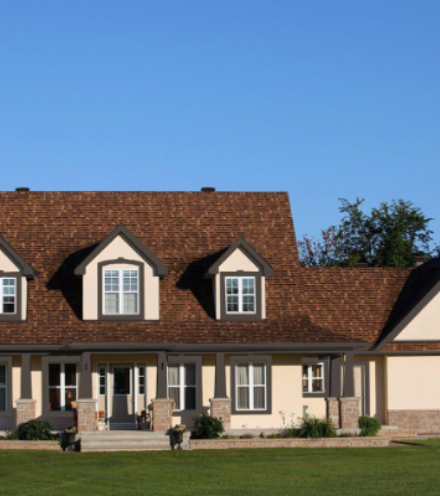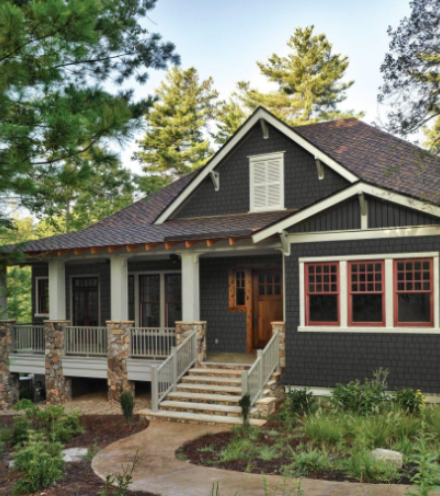Your home's exterior cladding certainly has a big impact on the curb appeal of your property, but the primary purpose of siding is to protect the house from the elements.

Siding acts as a shield against inclement weather, destruction from insects and pests, increases the ability of insulation, and overall keeps your house protected from the daily wear-and-tear of constant weather exposure. Poor quality, weak siding will eventually experience failure, which gradually leads to other issues like moisture damage.
Top 5 Most Durable Siding Materials
Many homeowners searching for new siding will undoubtedly want the toughest option they can afford, especially if they've previously bad experiences with inferior materials. There are a few different types of durable siding available, ranging from traditional to modern manufactured options. However, before you make your decision it is wise to consider that even the toughest siding may still have some disadvantages you should be aware of.
1. Stucco Siding
Most commonly associated with Southwestern Spanish homes, stucco was one of the first materials used for home siding. Stucco remains a highly durable siding option for homes of all types, even being used on quite modern houses.
Traditional stucco consists of a blend of cement, lime, sand, and water. There are some synthetic Stucco options available, but when it comes to durability traditional stucco is a bit tougher. Being a cement-based material, it is easy to understand why stucco ranks high when it comes to resilience.
There are a few drawbacks to this material. Firstly, the look of stucco is not going to be attractive to everyone and may not blend into all neighborhoods. Secondly, stucco is somewhat more labor-intensive to install, which means you'll be paying your contractor more. Lastly, if you ever get tired of stucco, it is not an easy material to remove and the process of residing over it isn't simple.
2. Brick Veneer Siding
Another classic siding that is still regarded as one of the most durable siding options is brick - more specifically brick veneer. Traditional brick veneer is constructed with the same brick-and-mortar technique, just simply utilizing thinner, single-wide bricks which only covers the outside wall rather than functioning as structural support.
Brick-and-mortar is incredibly strong when installed by an experienced mason using quality products. The number of historical buildings built or clad in brick is a testament to how well this material performs. Brick veneer also offers a very beautiful, warm look that many homeowners love. Beauty aside, brick does still have some flaws.
As mentioned, brick is only as strong as the mason is experienced. A mason lacking skill or the use of poor quality, porous bricks or weak mortar is going to lead to veneer failure and eventual moisture damage to the home. Brick veneer also can crack and degrade in regions prone to earthquakes. Another factor to consider is that brick veneer can be quite expensive, especially when factoring in how much you'll be paying your contractor in just labor alone.
3. Steel Siding
Steel siding is commonly seen on industrial and commercial buildings, which alludes to how strong this siding is. Steel is exceptionally durable and has a number of other advantages, such as low-maintenance, competitive pricing, and longevity. Steel works very well on many homes, regardless of regions. It has been proven to handle the harshest weather and storms while also holding up well in both bitter cold and scorching hot climates.
Steel is also a green material and one that is becoming more common on sustainably-built homes. Despite all the wonderful things about steel, there is one issue that turns off homeowners. This issue is the fact that steel siding may seem a little too industrial for some. Basically, the colder, modern look of steel is either a big selling point or a big reason to avoid it.
Homeowners that live within a mile or so of a coastline, or even have a beachfront home, should be extremely wary of steel siding. Salty air and ocean spray can quickly rust and weaken steel, especially as the steel ages and develops natural scratches and scuffs.
4. Modified Wood Siding
On the opposite end of cold steel siding is warm, welcoming modified wood, a newer man-made material. Traditional wood is often considered mid-range in durability, but naturally has a big disadvantage in that it requires so much maintenance to keep it performing well. Modified wood eliminates many of these issues as the manufacturing process turns the raw wood into a super dense, low-maintenance product.
The increased density and impregnation of liquids, along with heat processing, is what makes modified wood so durable. It isn't as attractive to insects and pests as real wood, plus the lack of care means neglect isn't as likely.
The problem with modified wood is that some products cannot be surface treated, which means you're essentially stuck with the natural wood color. This might not be an issue for some, but is a frustrating problem for homeowners that are yearning for a bold color, weathered effects, or something in a trendy shade to update the look of their property.
5. Fiber Cement Siding
The most common issues with the durable siding options featured, like color limitations, vulnerability to moisture and ocean air exposure, and difficult installation, can all be remedied with fiber cement siding. Fiber cement siding is a cladding option that is not only beautiful, but impressively strong and versatile.
Fiber cement can be used to clad homes in essentially any region, even on beach homes right along the water. Fiber cement also comes in a realistic wood grain finish, allowing you to get that attractive wood look without the flaws of wood itself. This siding can also be purchased pre-finished in a variety of colors or pre-primed, which is a great option for homeowners that already have a specific paint in mind.
Incredibly resilience with an excellent warranty, combined with the advantages above, is more than enough reason to pursue fiber cement when residing your home. When it comes to durability and aesthetic appeal there are few siding materials that check off almost every box as well as fiber cement can.




